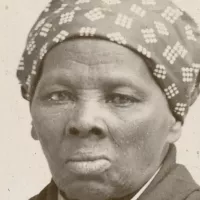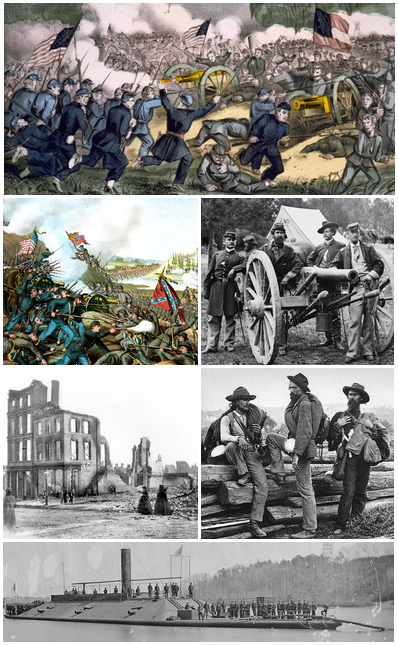The American Civil War (1861-1865) was fought between the Union and the Confederacy, formed by seceding Southern states. The primary cause was the dispute over the expansion of slavery into western territories. Southern states advocated for expanding slavery while the Union opposed it. Abraham Lincoln's election in 1860 triggered secession. The war ended with the Confederacy's defeat, the preservation of the Union, and the abolition of slavery through the 13th Amendment. It remains a defining event in American history.
1915: Death of Jennie Hodgers
In 1915, Jennie Hodgers, who fought for the Union under the name Albert D. J. Cashier, died at the age of 71 after living as a man in civilian life.
1915: Release of The Birth of a Nation
In 1915, the film "The Birth of a Nation" was released, significantly shaping public memory of the Civil War, despite its controversial content.
1927: Publication of The Rise of American Civilization
In 1927, Charles A. Beard and Mary R. Beard formalized the Lost Cause myth in their book "The Rise of American Civilization", which downplayed slavery and abolitionism. This spawned "Beardian historiography".
1933: Transfer of Battlefield Parks to National Park Service
In 1933, five Civil War battlefield parks, including Chickamauga and Chattanooga National Military Park, Antietam National Battlefield, Shiloh National Military Park, Gettysburg National Military Park, and Vicksburg National Military Park, were transferred to the National Park Service.
1934: Publication of Robert E. Lee's Biography
In 1934, historian Douglas S. Freeman published the first volume of his four-volume biography of Robert E. Lee, noting that Lee gave the Army of Northern Virginia its final name on June 1, 1862.
1935: Publication of Robert E. Lee's Biography
In 1935, historian Douglas S. Freeman published an additional volume of his four-volume biography of Robert E. Lee, continuing his study of Lee's life and military career.
1939: Release of Gone with the Wind
In 1939, the film "Gone with the Wind" was released, becoming a classic and influencing public perception of the Civil War era.
1970: Visitor Count at Battlefield Parks
In 1970, the five major battlefield parks operated by the National Park Service had 10 million visitors.
2011: Historians' Emphasis on Slavery
In 2011, a panel of historians emphasized that while slavery and its discontents were the primary cause of disunion, it was disunion itself that sparked the American Civil War.
2011: Recalculation of Civil War Death Toll
In 2011, the Civil War death toll was recalculated based on a 1% sample of census data, yielding approximately 750,000 soldier deaths, 20 percent higher than traditionally estimated, and possibly as high as 850,000.
2012: Release of Lincoln
In 2012, the film "Lincoln" was released, contributing to the ongoing commemoration and shaping of public memory surrounding the Civil War.
2017: Study on Economic Power in the South
In 2017, a study challenged the prevailing view that the southern planter elite retained its powerful position in the South after the Civil War, noting that the turmoil of the 1860s created greater opportunities for economic mobility in the South than in the North.
2018: Visitor Count at Battlefield Parks
In 2018, the five major battlefield parks operated by the National Park Service had a combined 3 million visitors, down 70% from 10 million in 1970.
2024: Further Recalculation of Civil War Death Toll
In 2024, the Civil War death toll was recalculated to 698,000 soldier deaths after examining newly available full census records.
Mentioned in this timeline
Virginia officially the Commonwealth of Virginia is a state located...

Books are a means of storing information as text or...

War is defined as an armed conflict involving the organized...

Robert E Lee was a prominent Confederate general during the...

Ken Burns is an American filmmaker renowned for producing historical...
A national park is a protected area designated by a...
Trending

7 months ago Bridget Fonda's weight loss stuns after years away; spotted with Danny Elfman.
4 months ago Kyle Finnegan Attracts Cubs' Interest: Nationals' All-Star Closer on the Radar

9 months ago Lily Collins Shares Adorable Dance Party with Daughter Tove and Celebrates First Birthday as Mom.

9 months ago Jamie Foxx at 'Number One on the Call Sheet' premiere, addresses DEI rhetoric.

5 months ago Téa Leoni and Tim Daly Get Married After Years Together: Intimate Wedding

7 days ago Dick Vitale and Charles Barkley Team Up for College Basketball Broadcasts This Season
Popular
Matt and Ross Duffer known as the Duffer Brothers are...

Candace Owens is an American conservative political commentator and author...

XXXTentacion born Jahseh Dwayne Ricardo Onfroy was a controversial yet...

Ilhan Omar is an American politician currently serving as the...

Tom Cotton is an American politician and Army veteran currently...

Harriet Tubman was a pivotal American abolitionist and social activist...

